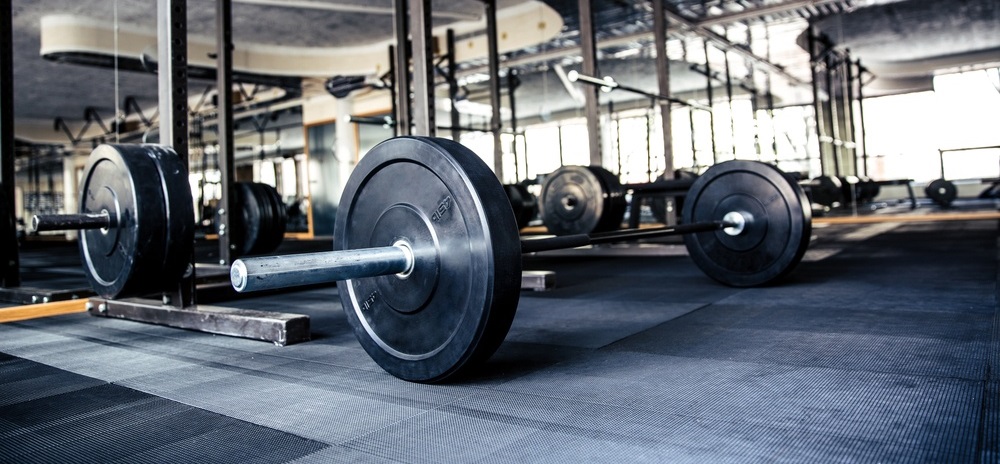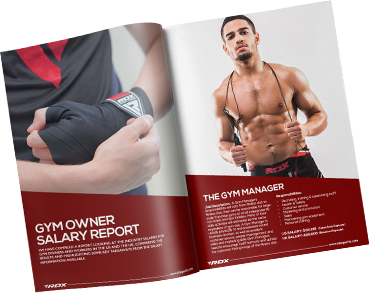The commercial success of your gym depends enormously on your choice of equipment. Like most gyms and health clubs you’ll be purchasing your gym equipment wholesale in order to get the best deal.
It’s therefore important to know how to accurately compare the equipment in order to manage costs, while ensuring your gym remains attractive to current and future members.

The importance of choosing the correct wholesale gym equipment
Nice changing facilities and helpful staff are good for member satisfaction and retention, but the typical commercial gym user visits your gym because he or she wants to work out.
The only way they can do that is by working up a sweat using the equipment you’ve chosen for them.
Pick the wrong equipment, or cheap out on inferior quality, and you’ll be hampering your members’ ability to hit their goals at your gym, leaving the door open for your competitors to attract them.
Let that happen too many times and your gym will struggle to survive.
Alun Peacock, MD of the JD Group in the UK, told Health Club Management that he believes the standard of equipment in his chain of health clubs is what attracts and retains members. With ten sites across the UK, each with approximately 200 pieces of wholesale gym equipment, he’d know better than most.
Without the right equipment for your gym business, customers have every reason to go and spend their money with your competitor. And with almost three quarters of your revenue as a gym owner coming from people paying memberships, you simply can’t afford to let that happen.
In fact, for every dollar of the gym industry’s $3.1 billion revenue, 70 cents comes from memberships.
Can you afford to risk 70% of your income by investing in the wrong equipment?
This illustrates just how important it is to carefully research the equipment before buying.
But before we get into the how, it’s important to remember that almost all novice gym owners will make the same, exact mistake when comparing wholesale gym equipment. We’ve covered this in step three.

Step one - Equipment cost
Notice we’re not saying ‘price’.
You need to look beyond the ticket price and calculate the lifetime cost of each piece of equipment you buy. As well as the money you spend on each piece of equipment, you need to factor in the following three criteria to determine the true cost:
- Resale value
You’ll be upgrading equipment regularly and - depending on the deal you got on your current equipment - you’ll either be selling it used or trading it in for new pieces when necessary. Either way, the resale value has an impact on your profitability as a business. To get an idea of resale value, places like eBay are actually pretty useful.
- Maintenance
A lot of gym owners overlook equipment maintenance when calculating the true cost of their equipment. The less maintenance required, the less your equipment will cost you in the long run. As a guide, equipment with electronics and integrated moving parts - like treadmills and climbers - cost more to maintain than static items like adjustable benches and racks.
- Size
With floor space a premium in any gym, it’s smart to think about the ‘real estate value’ of each piece of equipment. For example, functional trainers are great, but they take up a lot of space. We’ll provide a super useful example to help you when factoring the ‘size:value’ ratio when comparing wholesale gym equipment later.
Lease or buy?
Another big factor in determining the cost of your gym equipment is how you purchase it.
You have two main options; lease or buy.
Each option has benefits and drawbacks, but, in a nutshell, leasing is more expensive in the long term, but better for your cashflow. Leasing also gives you a better chance of securing the newest equipment at an affordable price.
Buying outright works out cheaper in the long run, but you have to invest a lot of capital and risk your cash flow. You also have to think about upgrades. With leasing, you upgrade regularly at little extra cost. When you own the equipment outright, you need to sell it before you can upgrade it. An expensive hassle when factoring the impact on gym operations.
To accurately and usefully compare the cost of wholesale gym equipment, factor in lifetime value, size, future maintenance and of course, price.
Step two - Equipment type
It’s crucial to define the equipment type you need when doing your comparisons.
You should already have a strong idea of the type of equipment you want for your gym. Of course, it all depends on the type of members you’re trying to attract.
If you’re going for the unapologetic bodybuilder type gym, that means you’ll be comparing strength training equipment such as squat racks, benches, dumbbells and barbells.
If you’re going for more of a fitness club vibe, you’ll be comparing elliptical machines, functional trainers, treadmills and kettlebells.
But what if you want a mix of equipment?
Most gyms do offer a mix, but it’s typically biased in favour of the types of members they’re trying to attract. In most cases, floor space will play a key role in dictating which types of equipment are the best choice for your gym.
How to compare the size: value ratio of each piece of gym equipment you compare
In a previous article where we looked at how much gym owners make, we took the example of a functional trainer vs a set of free weights to determine size:value ratios.
One functional trainer costs approximately $2,300 wholesale.
On average, a gym with more than 20 members will have two of these. That’s approximately 20 square feet occupied and $4,600 spent.
A five-set of dumbbells should cost around $320, including the rack. You’ll probably need two of these too.
Two racks will take up slightly more floor space than two functional trainers, but while only one person can use a functional trainer at a time, five people can train using the dumbbells.
So as well as being cheaper, the dumbbells are higher value too, as they serve more members at a time. Plus, they’re cheaper to maintain.
To accurately and usefully compare gym equipment by type, always compare consider the ‘real estate’ of each piece, then compare similar items like-for-like.

Step three - Equipment quality
While there’s an element of subjectivity in deciding on the type of wholesale gym equipment to buy, quality is more objective. You certainly get what you pay for.
How to determine quality when comparing wholesale gym equipment
Price is the first and most obvious consideration. On the whole, with gym equipment - unlike wine and holidays - you generally get what you pay for.
Different price points represent different steps up in value based on materials and manufacturing techniques used, for example, steel vs plastic, or bolts vs welding.
You might remember we mentioned the one common - and big - mistake new gym owners make when comparing gym equipment. Well, here it is.
Never compare professional gym equipment with home gym equipment.
When people are building a home gym, they care about different things. Retailers know that home gym owners need to move equipment around, so they promote the fact that their equipment is light. This doesn’t matter in a professional gym. Light equipment is bad for a gym because it’s less robust.
They also know that there’s normally only one person using a home gym, so promote options like multi-functional, high space:value cross trainers and functional trainers. Again, this isn’t necessarily a good option for your professional gym.
Brand names can be misleading in this respect. Some brands cater very much to the retail market. They’re aimed at people looking to set up a home gym. Professional-standard gym equipment brands are less well known because they’re aimed at gym owners, rather than the average mainstream consumer.
Just because a brand name is unfamiliar, doesn’t mean it’s inferior.
To get a good quality comparison of wholesale gym equipment, try it out. See how the pulleys move, how well-fitted are the locks and clamps? If you’re familiar with using gym equipment yourself, you’ll get a good feel for how well built any piece of equipment is.
But the most important thing of all is this: always consider the commercials, not the convenience, when completing your comparisons.


